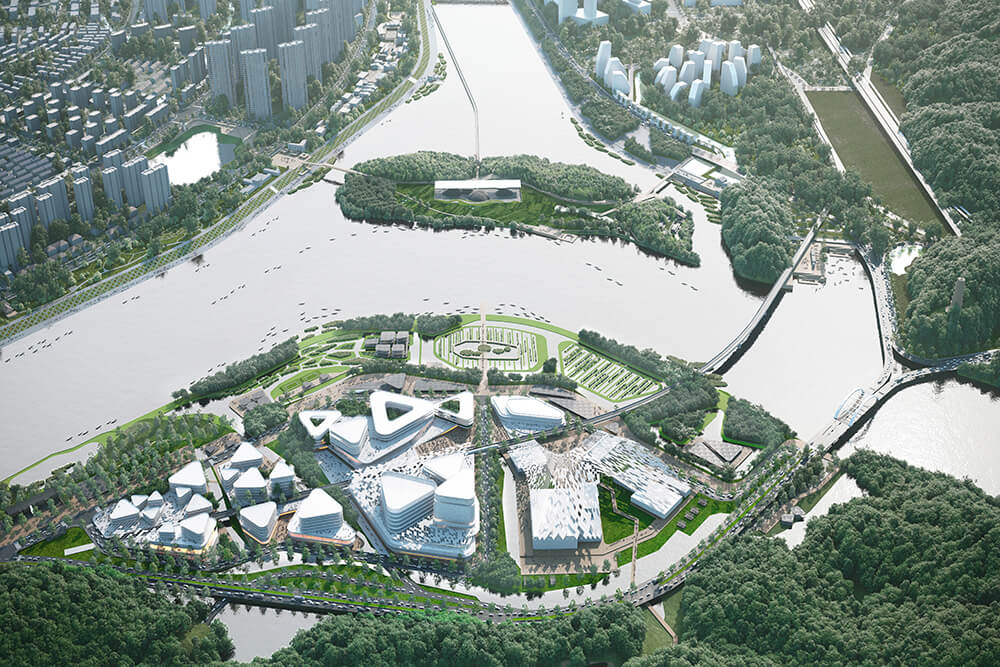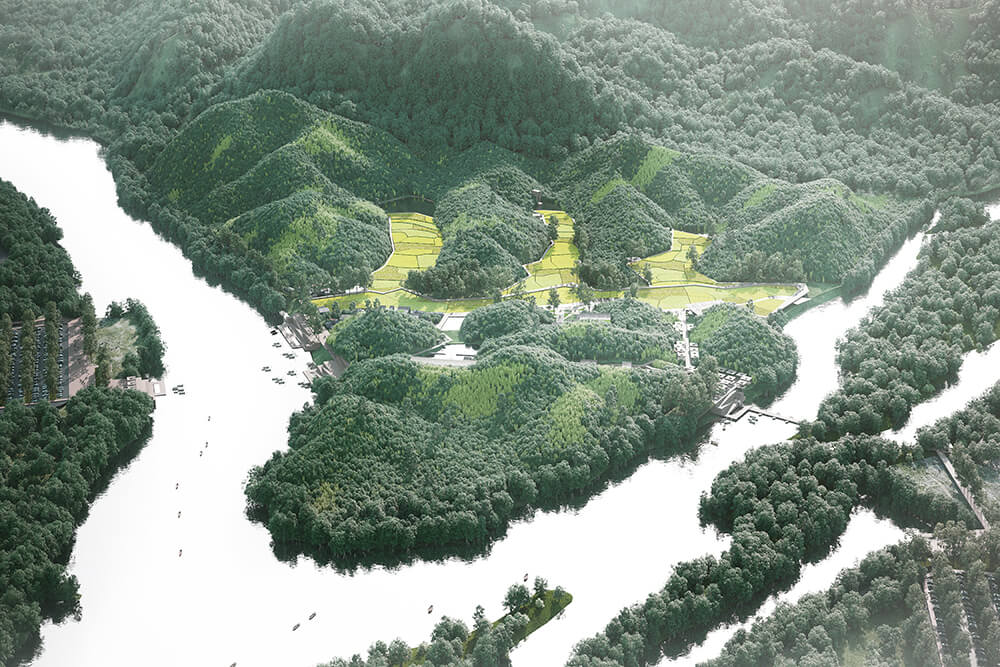50.000 ha
Lishui China
2020
Interactions between human and nature in the 21st century
Shanshui has been one of the fundamental principles of Chinese collective memory for centuries which defines the relationship between the often mineral constructions of man (the houses, the city) with its environment (the static mountains “Shan” and the “Shui” water, rivers and moving clouds). Shanshui explains the abstract aesthetic relationship between man and his environment.
This notion is now globally threatened with the rapid expansion of all types of networks and urban planning. The expansion and uncontrollable modification of city limits has eroded the foundations of this essential culture.
Shanshui refers to the landscape, the natural environment, the geography, when cities refer to the artificial, to the geometric design of city networks. We can thus parallel a series of notions that one with the other reinforce and breathe energy between things:
Geography / Geometry
City / Landscape
Artificial / Natural
What matters are the aesthetic and philosophical relationships between these elements.
Shanshui’s main reflexes find their roots in Chinese philosophies which emphasize the relationship between man and nature. This is the way in which architects, landscapers and town planners use these notions to define the rules for the composition of human installations in a new civilization attentive to the environment. This is to support the harmonious development of Liushi and its surroundings, designing a relevant project, an urban, sub-urban and landscaped prototype adapted to the sites. Take into consideration the changing world, the climatic and ecological challenges to come.
Identity as an essential theme
Why do we often return to our native lands?
Why do we seek to find the stable landscapes of our memories?
In a globalization world where over-information generates the absence of identity, it is urgent to know who we are, where? Cityscapes look the same all over the world. The skyline of large cities and their floors are identical. The singularity of places that legitimately situated us slowly evaporates. We now build the same everywhere, with the same materials.
One cannot conceive of ecological town planning without highlighting the in-situ qualities of a site : knowing where we are makes us human, legitimate and attentive to our environment. It is about amplifying the already there, and completing the invisible relationships of Shanshui;
A form of poetic understanding essential to offer residents spiritual strength, harmony between urban life and their aspiration to be close to nature. The identity, the genius of the place is essential for building lasting links between man and his environment.
Through architectural human traces (mud houses, wooden bridges, glazed brick roofs) The visual axes of the pagodas, intangible links.
Through the landscape traces of rivers, geological and geographical footprints, skyline of mountains and valleys (Shanshui)
This is to highlight the uniqueness of the site!
Client
Lishui municipal development
Design team
DE-SO Asia avec Martin Jaillais Neliaz
Construction cost
nc
Mission
International Competition finalist top 10
The project foreshadows the evolution and expansion of the city of Lishui and its surroundings.
After the transition from a civilization of the countryside and cultures to a civilization of industrialization with the rapid expansion of cities and networks. It is about evolving towards a civilization of ecology in harmony with the great Chinese philosophical principles in connection and in harmony with nature. The evolution of the world after a period of overproduction and overconsumption should turn towards a period of more restricted trade and reasoned development.
Energize the city with new ecological values beneficial to the economy. Connect the city centre to the suburbs by highlighting the mountain environment.
It’s about being attractive!
The relationship between man and nature in the 21st century in Lishui province.
The identity as an essential theme to develop. 3 sites proposal:
– Lishui (Museum, Business center)
– Sidu area (Housings, agriculture)
– Village of Bihu (Housing, tourism)
Shanshui’s main reflexes find their roots in Chinese philosophies which emphasize the relationship between man and nature.
Link to the video





